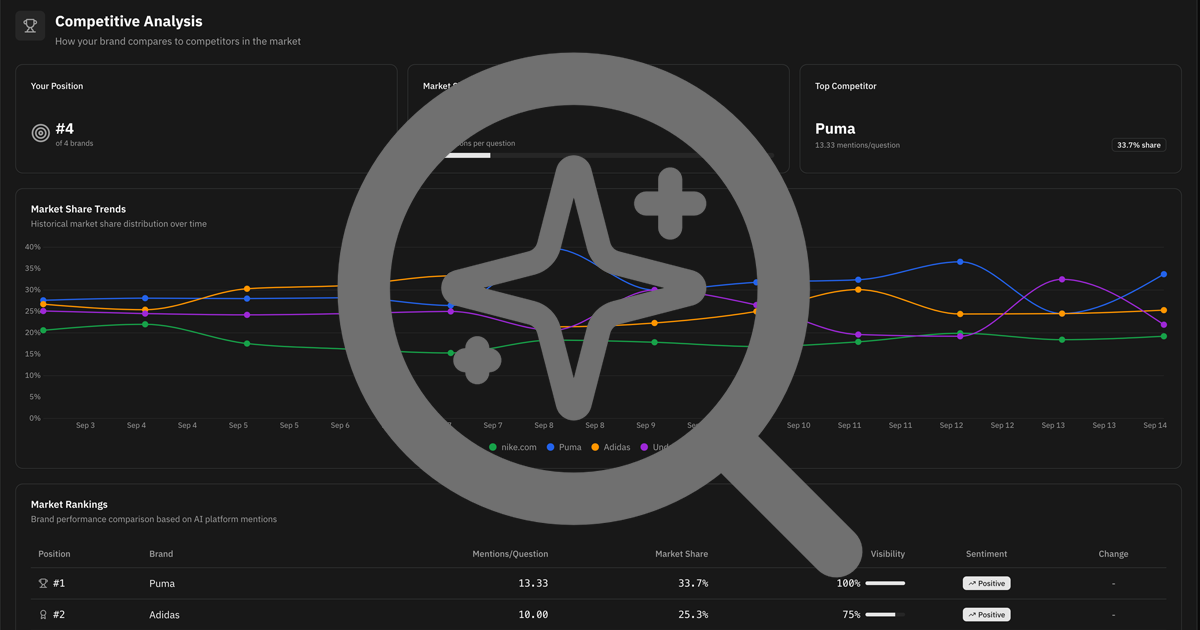GEO, AEO, SGE: We Decoded the Alphabet Soup Our Clients Keep Asking About
GEO, AEO, SGE—our clients ask about the differences daily. Truth is: they're all the same shift from search to answers.

"What's the difference between GEO and AEO? Should we optimize for SGE? Which one matters most?"
We hear these questions daily. And honestly? The confusion makes perfect sense. The industry loves its acronyms, and suddenly everyone's talking about three different optimization approaches that all seem... suspiciously similar.
Here's what we've learned from working with our clients on these challenges.
What We Tell Our Clients About Each Term
GEO (Generative Engine Optimization) When ChatGPT recommends a product or Perplexity cites a source, that's where GEO comes in. We optimize content so AI models choose to reference it in their generated responses. Think of it as making your content "AI-friendly" for large language models.
AEO (Answer Engine Optimization) This one's broader. It's about becoming THE answer—whether that's in Google's featured snippets, voice assistant responses, or yes, AI chatbots. We've been doing AEO for years without calling it that. Remember optimizing for "Position Zero"? That was early AEO.
SGE (Search Generative Experience) Google's specific implementation of AI in search. Those AI Overviews you're seeing at the top of search results? That's SGE in action. It's Google's answer to ChatGPT, integrated directly into their search results.
The Truth We Discovered: They're All the Same Problem
Here's what became clear immediately: our clients were asking the wrong question.
It's not about choosing between GEO, AEO, or SGE. They're all responses to the same fundamental shift—people aren't clicking through lists of links anymore. They want direct answers.
When we tested different optimization approaches, we found something interesting: the same optimizations work for all three.
The results? Content optimized with our approach started appearing in:
- ChatGPT responses (GEO)
- Google's featured snippets (AEO)
- Google's AI Overviews (SGE)
All from the same optimization strategy.
What Actually Works (Based on Our Testing)
Structure is everything AI systems—whether ChatGPT, Google's SGE, or voice assistants—all love the same thing: clear structure. Headers, bullet points, tables. When content is restructured this way, visibility in AI sources consistently improves.
Answer the question immediately Old SEO: Build up to the answer to keep people on the page. New reality: Answer in the first sentence, then elaborate.
This change often surprises people. "Won't visitors just leave?" But engagement actually increases when you give answers quickly. People trust sites that respect their time.
Citations and sources matter more than ever Adding research citations to content has a double benefit: it appears more frequently in AI responses AND gets marked as a "credible source" when it does. That's gold in the AI era.
The Mistakes We See Everyone Making
Treating them as separate strategies We've seen companies hire different specialists for GEO, AEO, and traditional SEO. They're essentially paying for the same work three times.
Optimizing for the tool, not the behavior "We need to rank in ChatGPT!" No. You need to be the answer when someone asks a question—regardless of where they ask it.
Forgetting about accessibility This surprised us: accessibility fixes have an outsized impact. Why? AI systems read content like screen readers. Make your site accessible, and you've automatically optimized for AI.
What We're Doing Differently Now
We don't treat GEO, AEO, and SGE as separate disciplines anymore. We see them as facets of the same challenge: Answer Optimization.
That's why we built GEOaud.it to track all of it—not just one piece of the puzzle.
Because that's the shift. From search engines to answer engines. From finding information to getting answers. From ten blue links to one conversational response.
Our process now:
- Identify the questions customers actually ask
- Structure content to answer those questions directly
- Ensure technical readiness (crawlability, structured data, accessibility)
- Monitor performance across ALL answer surfaces—not just Google
The Future We're Preparing Our Clients For
The distinctions between GEO, AEO, and SGE will blur even more. What matters isn't the acronym—it's understanding that discovery has fundamentally changed.
We're already seeing this in e-commerce. Products optimized properly appear in ChatGPT shopping recommendations, Google's SGE product carousels, and voice shopping results—all from the same optimization approach.
The winners won't be those who mastered GEO or AEO or SGE. They'll be those who understood they're all the same thing: the shift from searching to asking.
Start Here, Not With Acronyms
Forget the terminology wars. Ask yourself:
- Can AI systems read and understand your content?
- Do you answer questions directly and clearly?
- Is your technical foundation solid?
Fix those three things, and you're optimizing for GEO, AEO, and SGE simultaneously.
Because we've learned: it's not about gaming different systems. It's about being genuinely helpful in an AI-first world.
The acronyms will change. The principle won't: Be the answer, wherever answers are given.